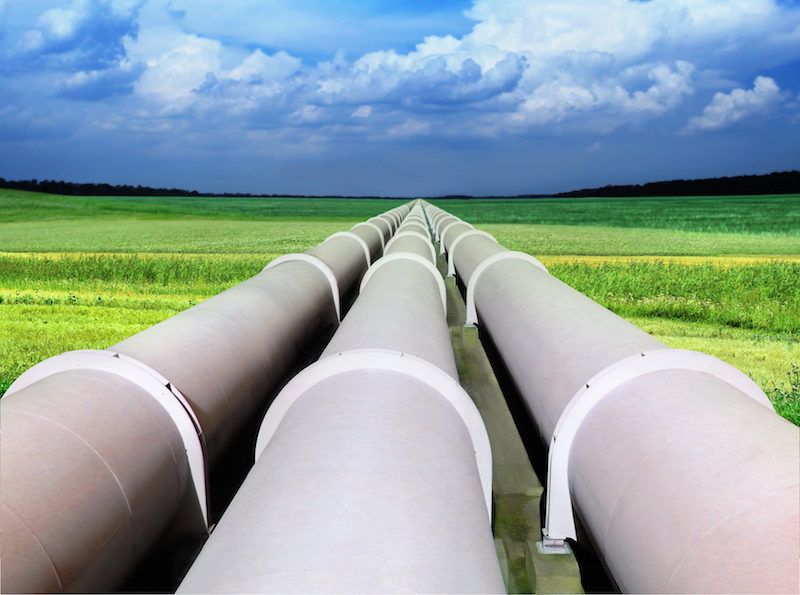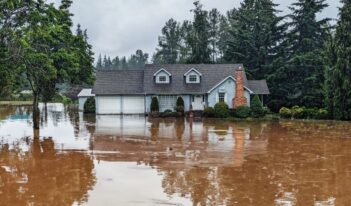
More pipelines and electricity transmission lines would bolster the fight against climate change.
Environmental advocacy groups have enjoyed considerable success in recent years in their efforts to block construction of new gas pipelines and electricity transmission lines. For example, they have significantly delayed, and risked cancellation of, a number of proposals to construct natural gas pipelines across Virginia and New York as well as proposals to construct electricity transmission lines across Illinois and New Hampshire.
But environmental advocacy groups that delay or block construction of gas pipelines and electricity transmission lines create significant obstacles to efforts to mitigate climate change. In fact, it is impossible to engage in effective mitigation of climate change without constructing many new gas pipelines and electricity transmission lines.
Electric generating plants account for 38 percent of carbon dioxide emissions—the most significant of the greenhouse gases that contribute to climate change. Because there is no economically viable method of reducing emissions of carbon dioxide from combustion of any carbon-based fuel, the only viable method of reducing carbon dioxide emissions from generating plants is through fuel switching, where plants substitute natural gas for coal. Substituting natural gas for coal as a generating fuel reduces emissions because natural gas has about less than half of the carbon content of coal. Substituting carbon-free sources of electricity like wind and solar for coal has an even greater mitigating effect on carbon dioxide emissions.
Over the last three years, the United States has enjoyed more success in reducing carbon dioxide emissions than has any other country, largely owing to the effectiveness of fuel switching. After crediting the United States with the largest reduction in carbon dioxide emissions of any country in 2016, the International Energy Agency recognized the dominant role of fuel switching: “The decline was driven by a surge in shale gas supplies and more attractive renewable power that displaced coal. Emissions in the United States…were at their lowest level since 1992.”
The United States’ ability to maintain or exceed its remarkable record of emissions reductions depends critically on the construction of many natural gas pipelines and electricity transmission lines. The United States can only maintain or increase its rate of substitution of natural gas for coal by constructing the pipelines that will allow it to transport newly discovered gas supplies to generating plants.
More gas transportation capacity is also critical to maintaining or increasing the rate at which generating plants substitute carbon-free sources for coal because of an important characteristic of most carbon-free sources: Wind and solar generate power on an intermittent basis and there is no economically viable method of storing electricity. Thus, intermittent sources are reliable only to the extent that generating plants can devise and implement ways of meeting the demand for electricity during periods in which the sun doesn’t shine or the wind doesn’t blow.
At present, and for the foreseeable future, the United States must have access to abundant supplies of natural gas for use as a backup source of electricity when electricity from intermittent sources is not available. New pipelines are essential to provide access to those supplies.
In addition, the United States must increase the capacity of its electricity transmission grid by constructing new transmission lines in order to be able to maintain or increase the rate at which it substitutes carbon-free sources of electricity for coal. As Alexandra Klass and Elizabeth Wilson have explained, the most promising locations for wind and solar generating facilities are far from the population centers in which most electricity is consumed. The United States must construct many new transmission lines to connect those sources to these heavy-consumption areas.
The nation must also expand the capacity of its transmission grid by constructing many new transmission lines to be able to use intermittent sources like solar and wind efficiently and with tolerable adverse effects on the reliability of service. The United States can only maximize the probability that electricity will be available at all times from intermittent sources by ensuring that all markets have access to a large number of geographically diverse sources with diverse periods of availability.
America’s present transmission grid falls far short of the robust capacity needed to make the transition to a system that relies primarily on intermittent sources of electricity like solar and wind to meet its energy needs. The country needs many new transmission lines if it wants to continue mitigating climate change by increasing reliance on carbon-free sources of electricity.
Going forward, any environmental advocacy organization should give a lot of thought to the likely effects of its actions before opposing construction of any gas pipeline or electricity transmission line. Although there may be situations in which a proposed pipeline or transmission line would have local environmental effects so devastating that they exceed the environmental benefits of the pipeline or transmission line, these situations will likely be rare.




